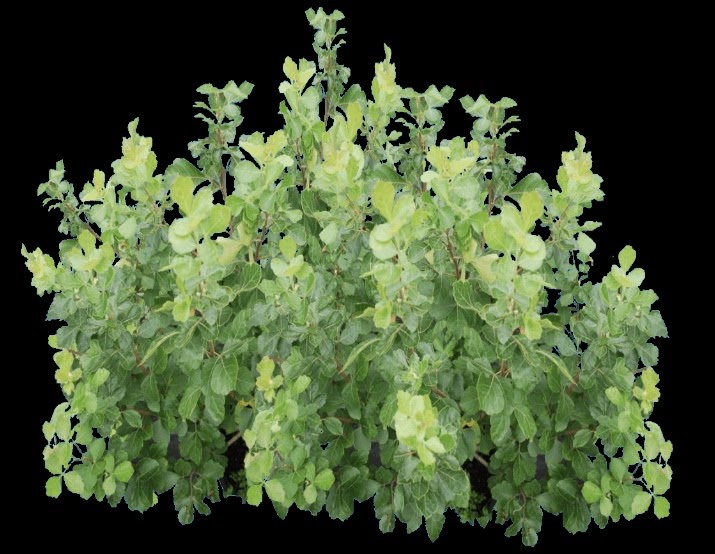While sloping properties can be particularly gorgeous because they often open up lovely views and flatter a home’s architecture, they are also difficult to maintain. Hillside or slope erosion control can be a huge issue for some regions, particularly during rainy seasons when hillsides are likely to lose their anchor. Unless you are a mountain goat, homeowners find that mowing, weeding, and trimming become immensely difficult to attend to on a hillside.
Two fantastic erosion control shrub varieties include Shrubby Cinquefoil (Potentilla fruticose) or Gro Low Sumac (Rhus aromatica ‘Gro-Low’). Both grow in full sun and in part shade, survive cold winters, and are immensely drought tolerant. Sumacs also have the added benefit of being rather fire retardant, which creates a healthier solution on a wooded hillside. Below are plant profiles for both shrubs, which give you all the details on how easy they are to grow.
Shrubby Cinquefoil (Potentilla fruticosa); also known as Potentilla, Cinquefoil, Golden Hardhack, Widdy, Prairie Weed, Hardhack, Dasiphora fruticosa

Plant Description: Dense deciduous shrub with fine textured leaves and small yellow buttercup flowers. Regularly blooms from June all the way until first frost. Quite attractive with low maintenance. Great shrub for erosion control.
Plant Type: Deciduous shrub
Sun/Shade: Full sun to part shade
Cultivation: Awesome choice for hot dry northern locations as the plant is very drought tolerant. Prefers even moisture and well-drained soils if able. Performs poorly in the deep south due to exceptionally high summer heat. Tolerates extremely cold winters. Prune to the ground or simply prune branches in late winter.
Height: 2 to 4 feet (.60 to 1.21 meters)
Width: 3 to 5 feet (.91 to 1.5 meters)
Bloom: Yellow, orange, or white
Bloom Time: Summer
Origin: Northern hemisphere
Zones: Zone 3, zone 4, zone 5, zone 6, zone 7
Wildlife: Butterflies, pollinators
Landscape Uses: Foundation planting, pollinator garden, mixed shrub borders, mass plantings
Special Features: Autumn brings on yellow-brown leaf color. Known as a strong plant for urban environments to combat air pollution. Resistant to rabbits and deer.
Fragrant Sumac Gro-Low (Rhus aromatica ‘Gro-Low’); also known as Lemon sumac, polecat bush

Plant Description: Very tough low-growing shrub, which functions as a groundcover. Is particularly effective to stabilize slopes or banks. If burned, the plant's roots stay intact, which makes it a strong plant for slope retention, particularly in areas that suffer from drought and fire. Grows well in areas with very difficult soil. Leaves are fragrant when crushed or brushed against.
Plant Type: Deciduous shrub
Sun/Shade: Full sun to part shade
Cultivation: Grows well in a wide variety of average well-drained soil types. Handles drought, erosion, heavy clay soil, and shallow-rocky soil with ease. Medium water needs, more watering in extreme heat. Plant spreads by root suckers to form low groupings.
Height: 2 to 3 feet (.60 to .91 meters)
Width: 6 to 8 feet (1.8 to 2.43 meters)
Bloom: Yellow
Bloom Time: Spring
Zones: zone 4, zone 5, zone 6, zone 7, zone 8, zone 9
Wildlife: Butterflies, birds
Landscape Uses: Groundcover, embankment stabilizer, hillside gardens, cottage gardens, woodland garden, rustic or naturalized gardens
Special Features: Midwest cultivar which has glorious red-orange fall color which makes a great substitute for the very invasive “Burning Bush”. Although the leaf structure resembles poison ivy, Gro-Low Sumac is entirely non-poisonous. All sumacs are fire retardant to an extent and are encouraged for plantings in areas that need fire-resistant plantings.
Download iScape now and build smart landscape designs that help solve problems like erosion control. iScape it!






